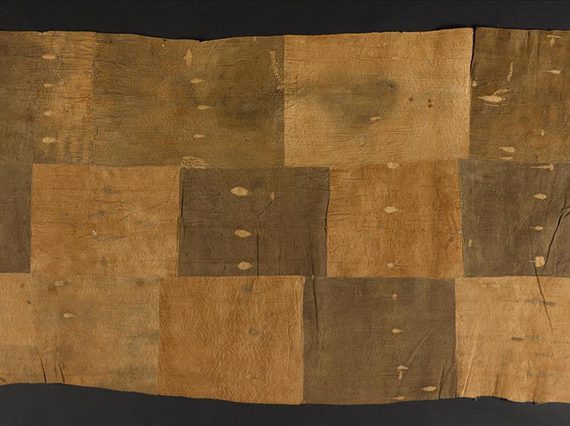
African Barkcloth: Tradition, Innovation and Change
This investigation of the African textiles collections aimed to identify, document and develop the collections to understand the wide range of factors that have made an impact on continuity, innovation and change in African textile traditions.
Last updated: 21 March 2022
About the project
The Museum collections are in many instances rare examples of material from traditions and practices no longer active in countries of origin.
In 2016 a curatorial research project to find out more about the contexts of collection, production and use of the National Museums Scotland African barkcloth collection got underway. The majority of the barkcloth was acquired by the Museum between the late 19th and early 20th century by Scottish travellers, missionaries and colonial officials, who were among the first Europeans to visit east and central Africa. The objects they collected form the backbone of National Museums Scotland’s early ethnographic collections and are tied into the complex historical relationships between Scotland and Africa. Research also takes into account the collectors to consider contexts of acquisition which provides an opportunity for critical study of African historical material in these relationships.
Unlike its neighbouring countries, Uganda continues to produce barkcloth today. With production and use a centuries old tradition, it remains a symbol of status and kingship, although it declined in general use with European contact and the increased availability of imported cotton cloth in the late 19th century. This impact resulted in the end of production and use in Malawi and Zambia. There is, however, a revival in barkcloth production in Uganda following the recognition in 2005 by UNESCO of the production of barkcloth in Uganda as a Masterpiece of Intangible Heritage. Contemporary artists and designers are finding new and innovative ways of reinterpreting this material in their exploration and expression of indigenous history, religion, politics and identity. The eco-friendly and sustainable properties of barkcloth make it a material which is accessible, affordable and full of potential.
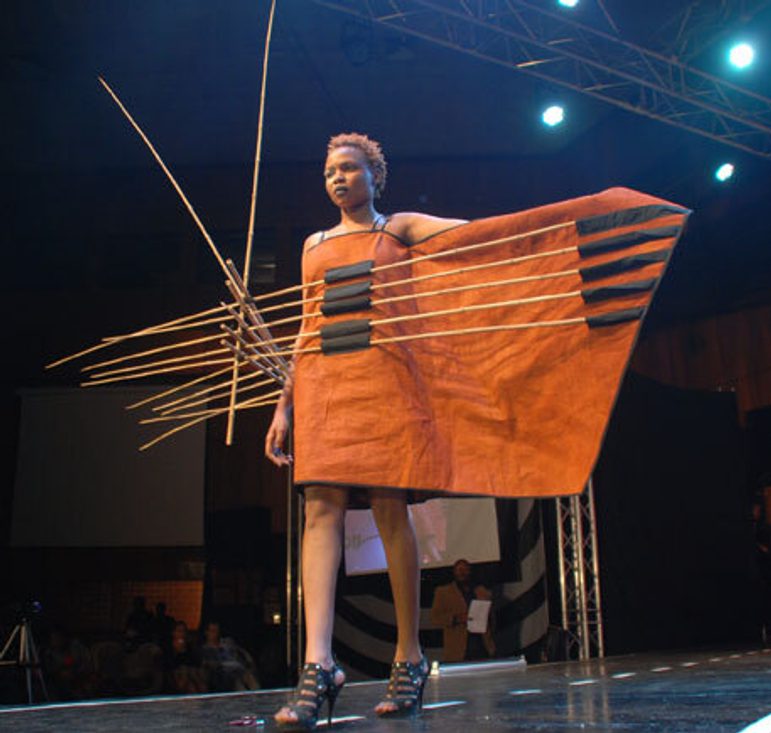
- Project title
African Barkcloth: Tradition, Innovation and Change
- Project active
2016
- Research theme
Identities and Cultural Contacts, Scotland's Material Heritage
Contributors
Dr Sarah Worden - Principal Investigator
Ugandan artists Sanaa Gateja and Xenson Znja
Deveron Projects (formerly Deveron Arts)
The project was inspired by, and built on work with Dr Sarah Worden, Senior Curator of African Collections at National Museums Scotland, and the Ugandan artists Sanaa Gateja and Xenson Znja, during their artist-in-residence programme with Deveron Projects (formerly Deveron Arts) in Huntly, Aberdeenshire in 2014. Their work was a creative response to local 19th century missionary connections between Scotland and Uganda. As a result of the collaboration, one of Xenson Znja’s unique barkcloth outfits from his 2011 Futuristic Past fashion show was donated to the national collection by Deveron Projects.
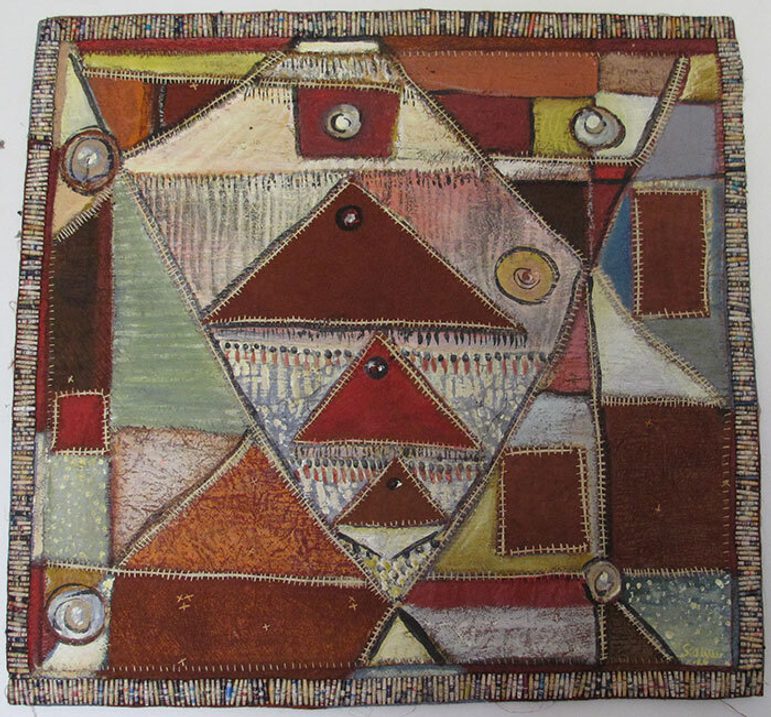
In May 2016, supported by a Jonathan Ruffer Curatorial Award, Sarah Worden visited Kampala, the capital of Uganda, to meet producers and artists, and in particular to reconnect with artist Sanaa Gateja. She discovered that barkcloth is a material which arouses strongly held opinions, a material which is driving community initiatives and creative energy, and above all, provides a dynamic link between past and present. Further acquisition of contemporary barkcloth artwork is being considered as we continue to follow these and other artist’s work.
In October 2016 Sarah presented the research at the Textile Society of America bi-annual Symposium in Savannah Georgia, US, where her paper ‘Tradition and transition: the changing fortunes of barkcloth in Uganda’ was nominated for a Founding Presidents award.
What is barkcloth?
Barkcloth is a cloth produced by stripping lengths of bark from the mature mutuba tree, Ficus natalensis, which grow easily in the fertile central southern region of Uganda, where it has been produced for centuries. After the removal of the bark the tree trunk is wrapped for protection, typically in banana leaves, which grow nearby, allowing another bark to grow, to be harvested again and again on an annual basis for up to 30 years.
The lengths of stripped bark are cleaned of the outer layer, boiled or steamed, then beaten for several hours with a graduating series of heavy carved wooden hammers, causing the fibres to stretch up to five times in width and about one tenth in length. The production of cloth from strips of bark is a skilled male occupation which was traditionally passed from generation to generation.

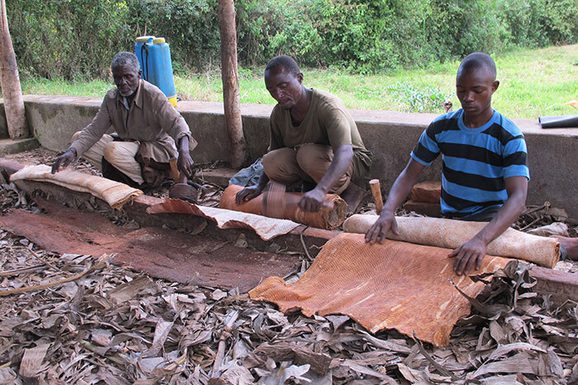
The collection
The Museum's collection of African barkcloth ranges from lengths of cloth to the tools of production and originates from modern day Malawi, Zambia, Democratic Republic of Congo and Uganda. Whilst not a systematic or comprehensive collection it does provide a fascinating window into a category of material which once had a wide range of uses in ceremonial, ritual and domestic life.

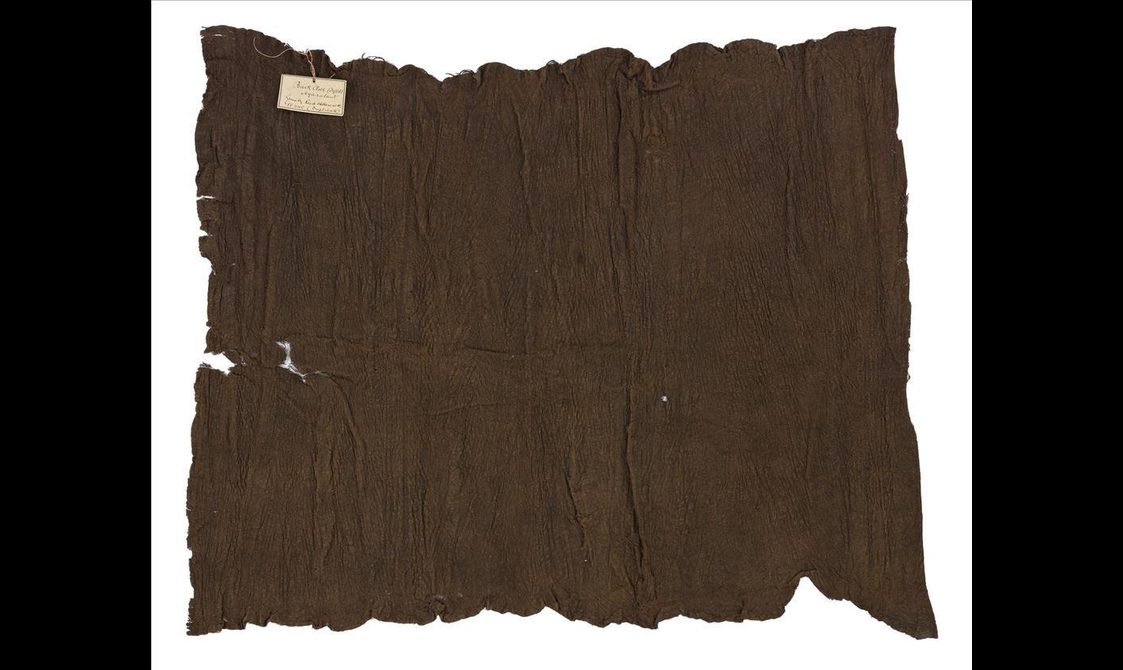
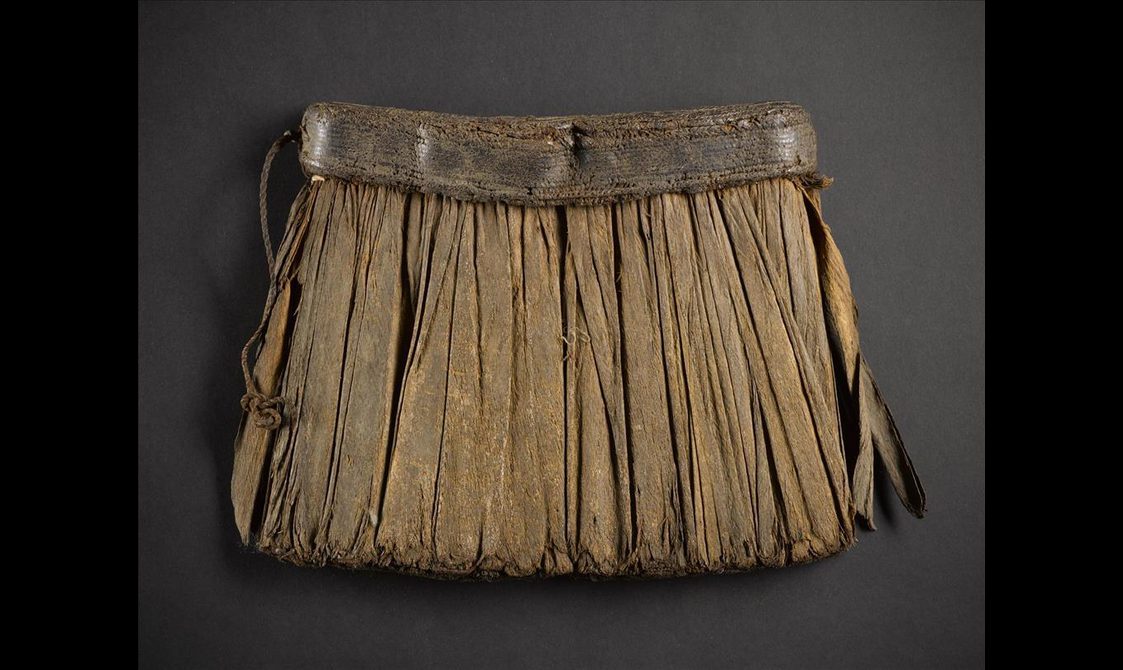
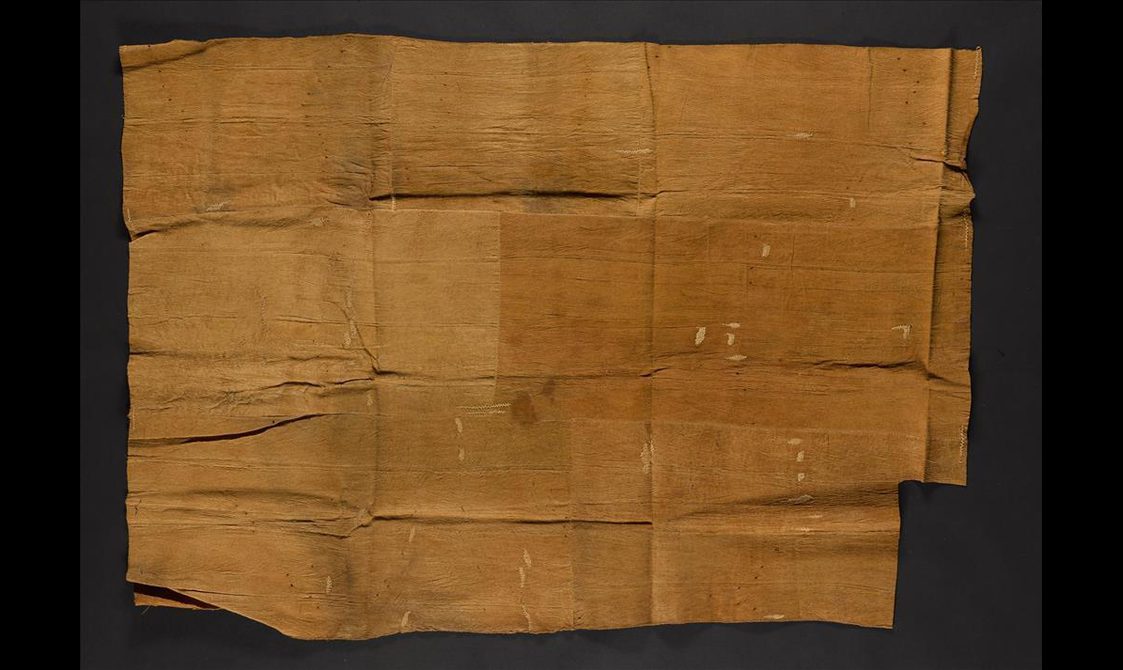
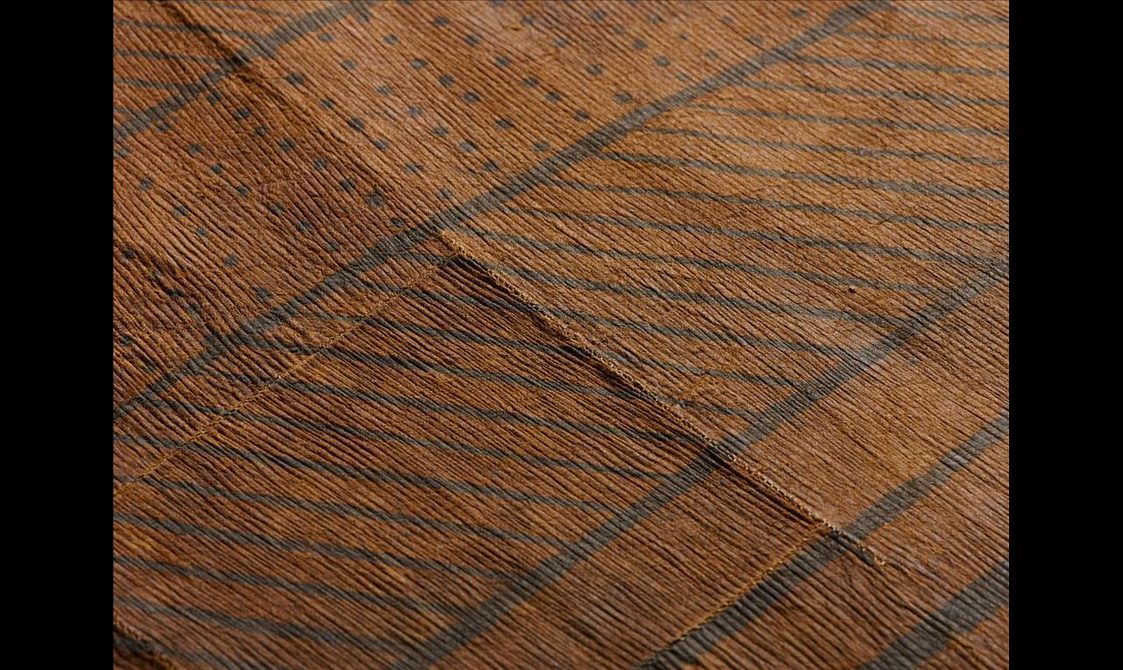

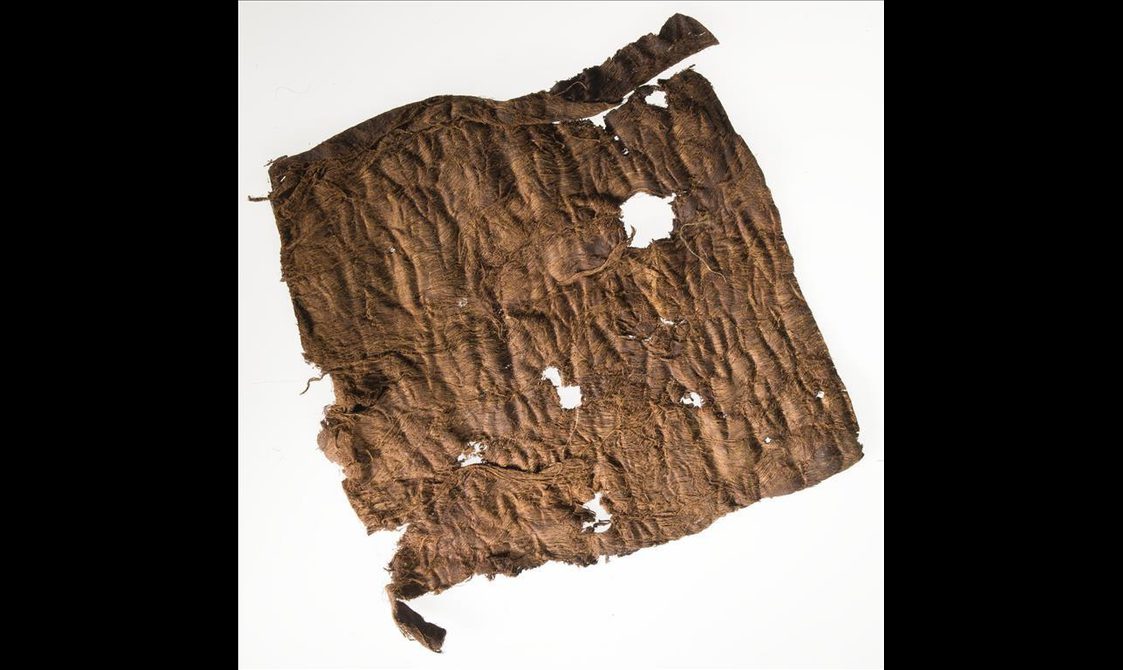
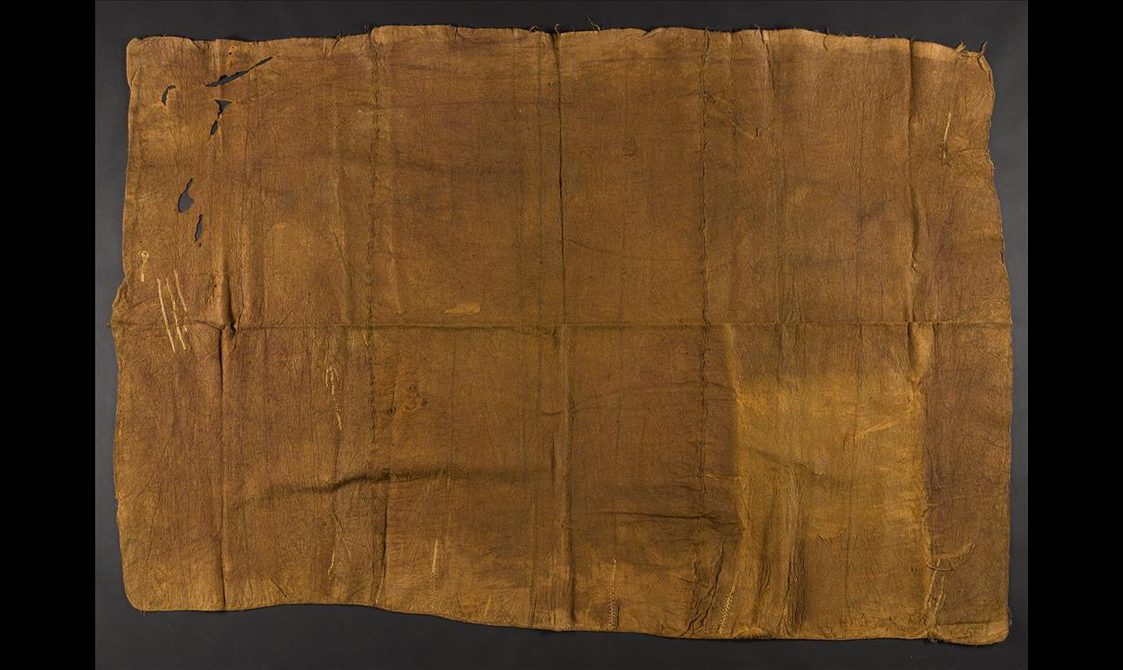
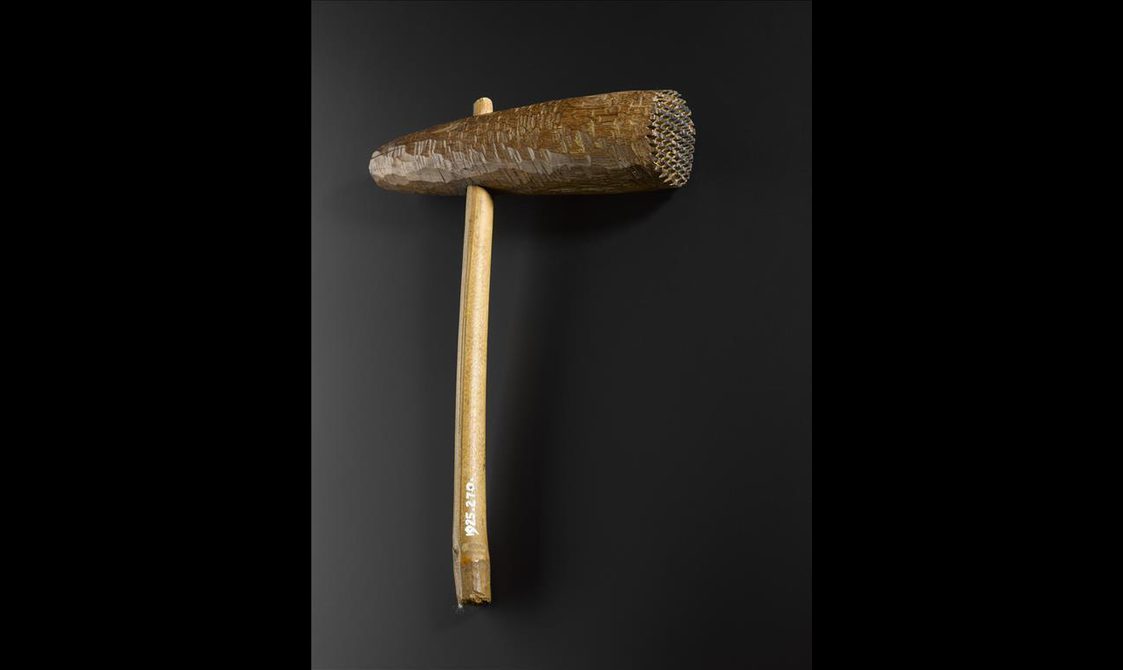
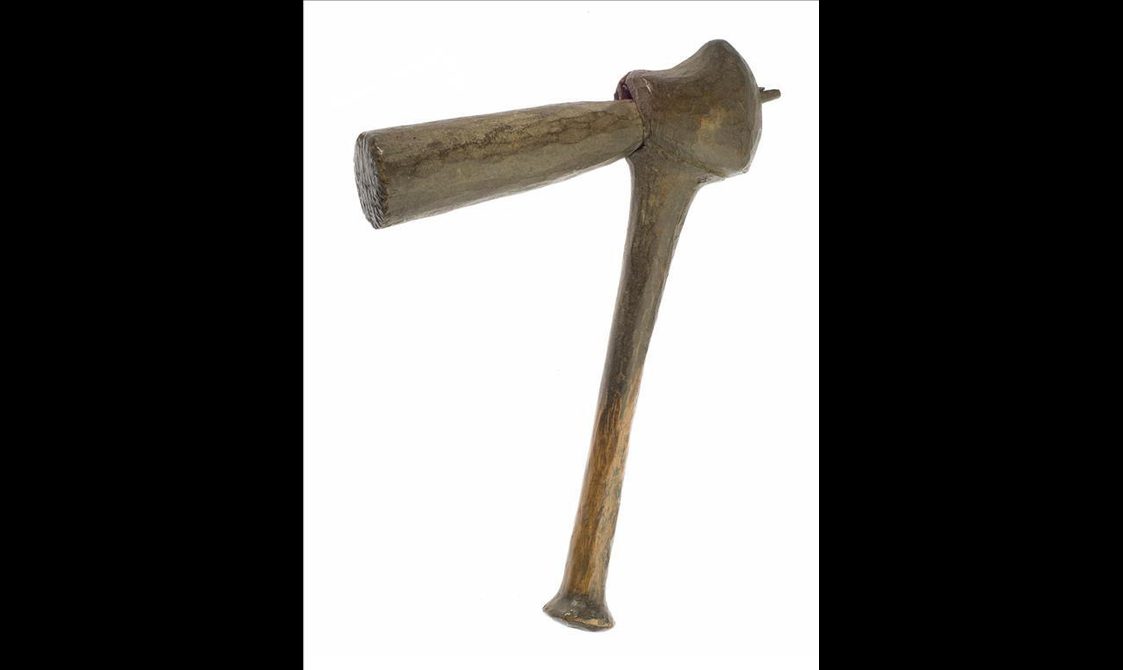
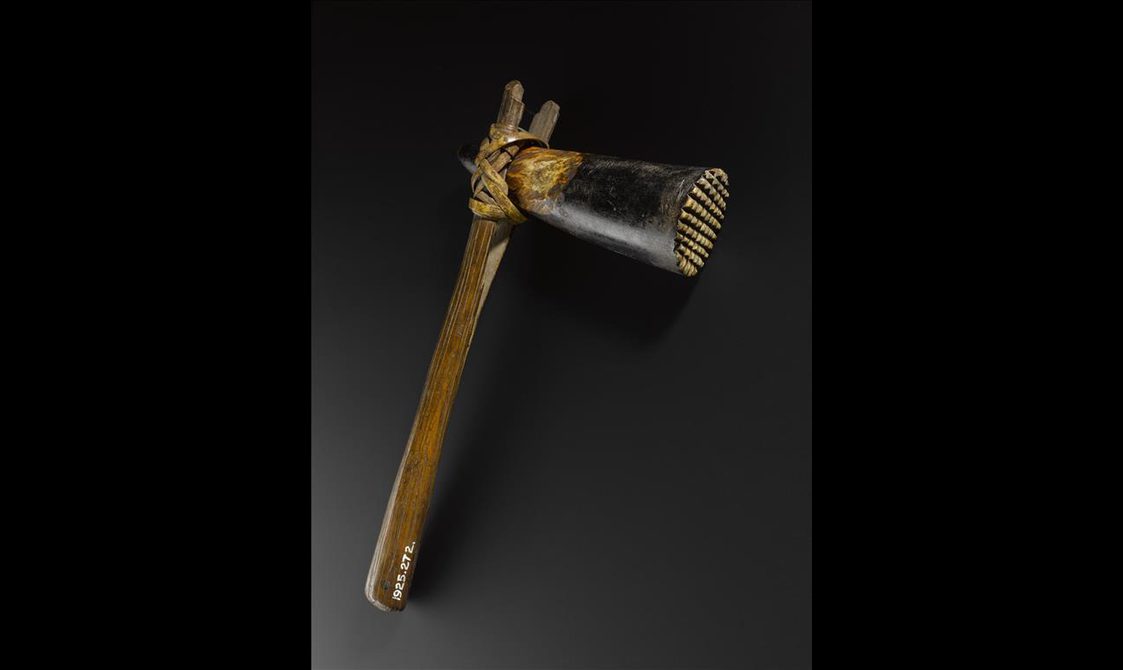
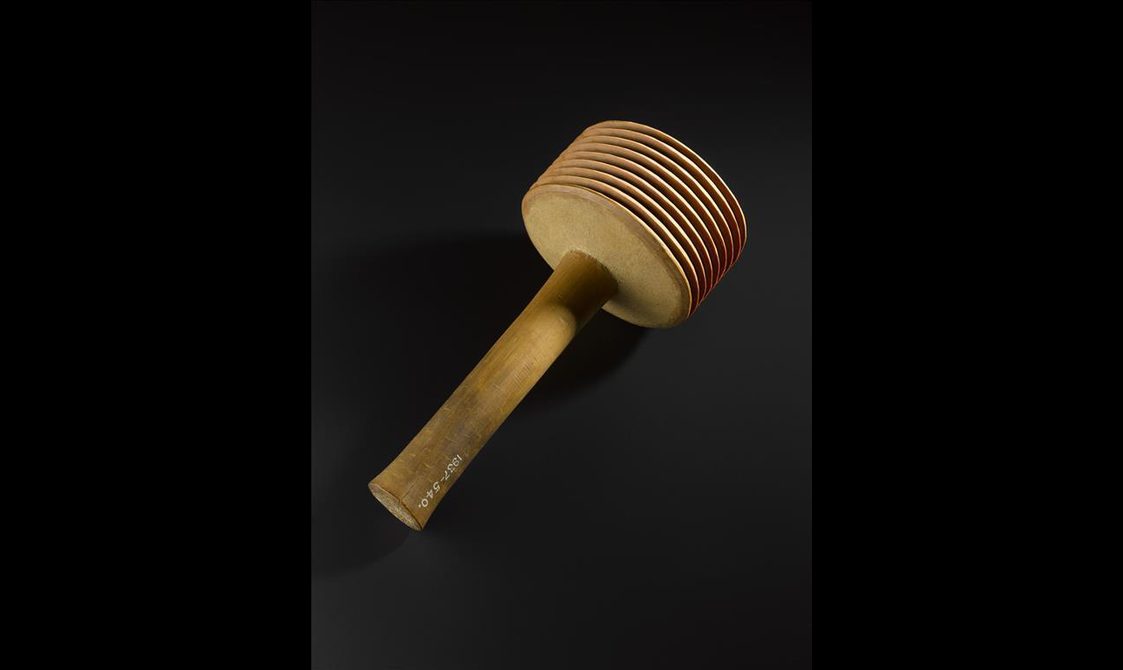
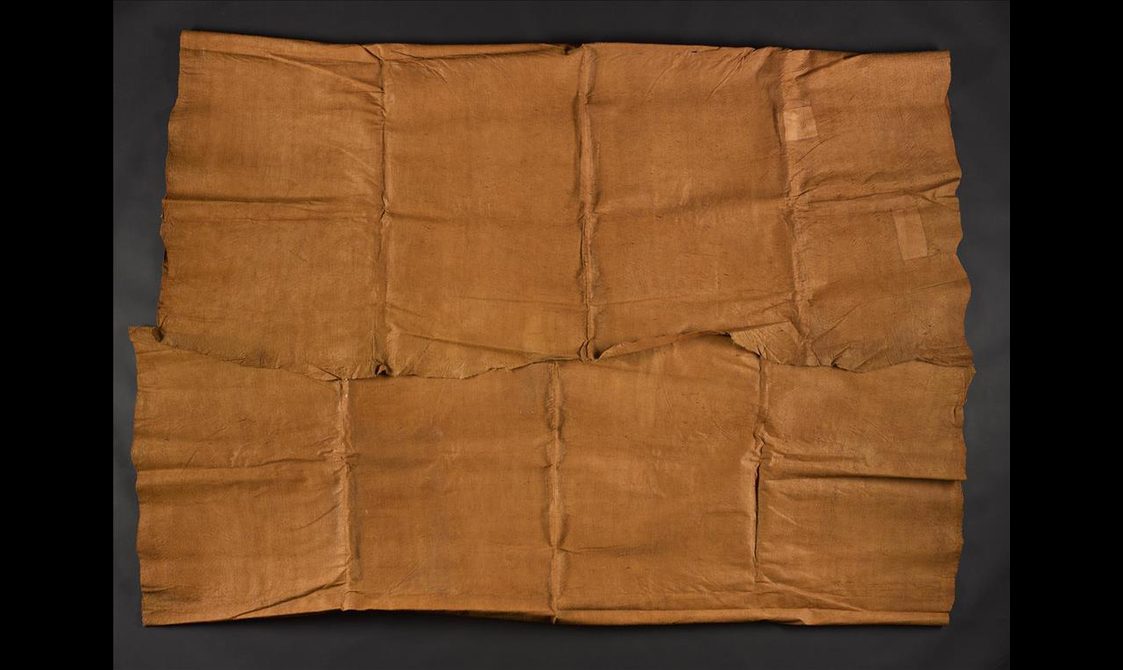

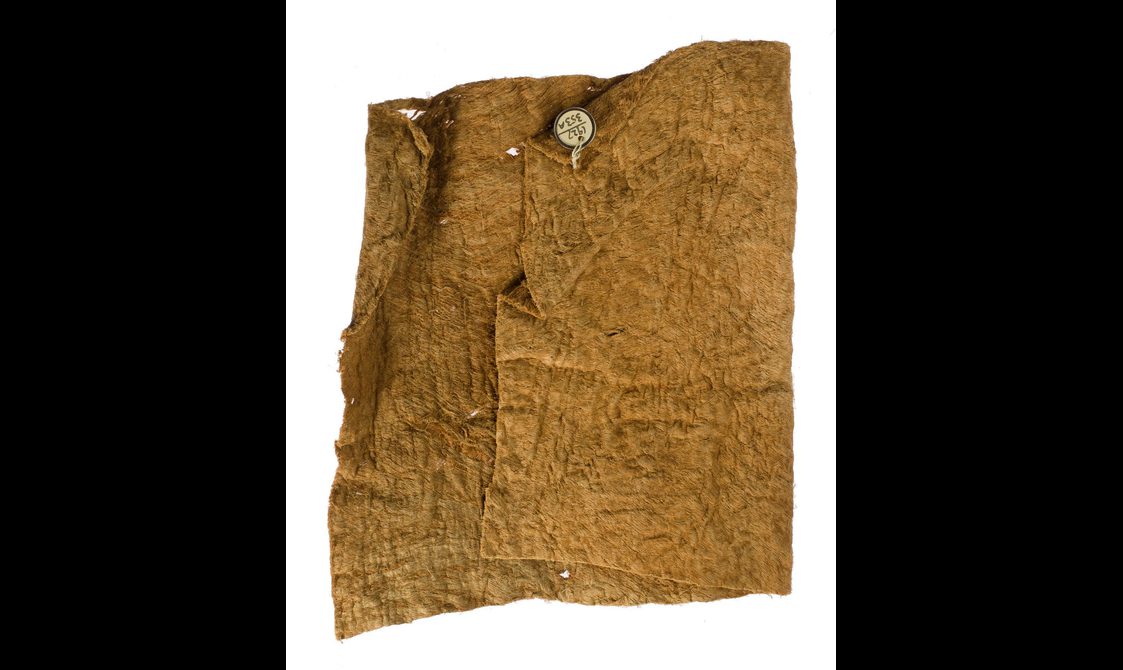
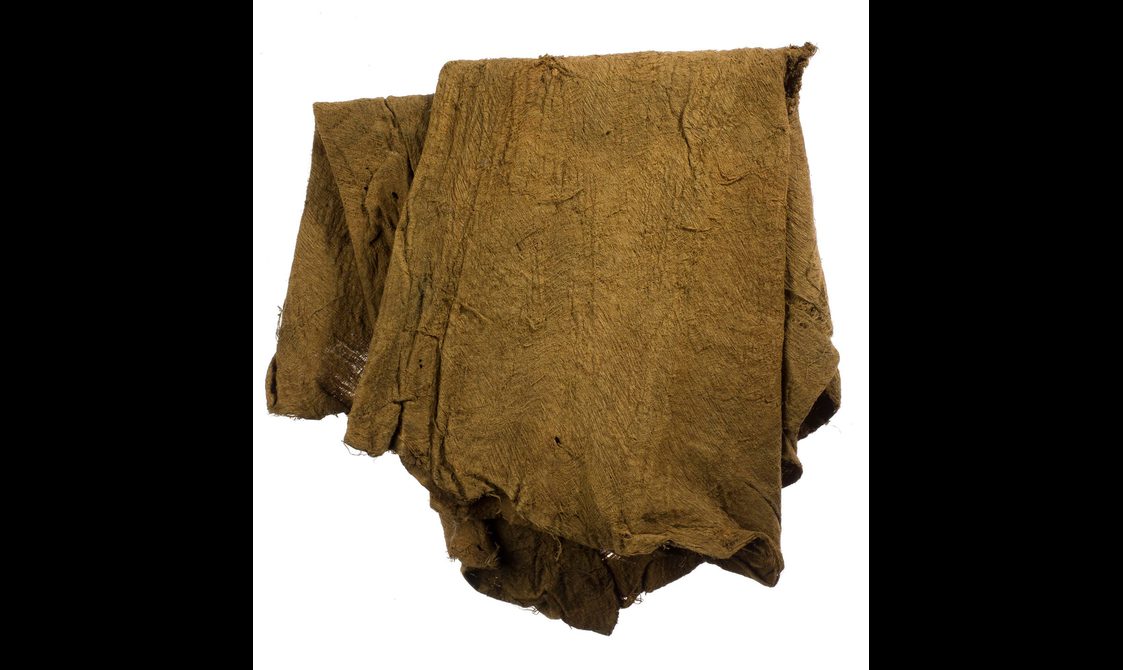
Project contact
Dr Margaret Maitland
Related to this project
- Discover
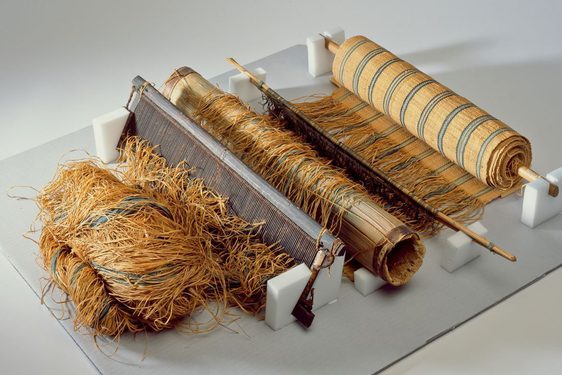
The ancient craft of barkcloth across the world
Barkcloth is a type of natural cloth made by stripping, soaking, and beating or weaving lengths of the inner bark from trees such as paper mulberry, ficus, and elm. It is produced in countries located along a tropical 'barkcloth belt'.… - Discover
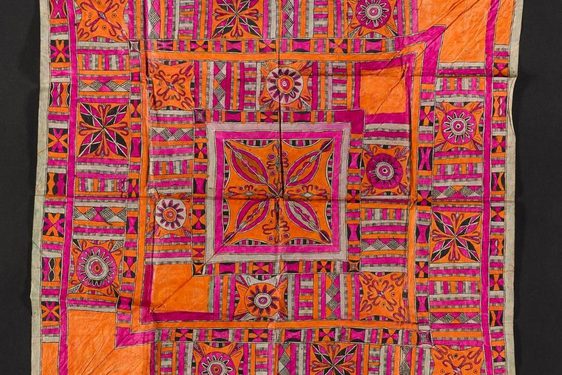
The history and revival of Indonesian pink barkcloth
Pink-dyed barkcloth from Central Sulawesi captivates with its vibrant colour. Discover the cultural role, production, and modern adaptations of barkcloth in this part of the Indonesian archipelago.